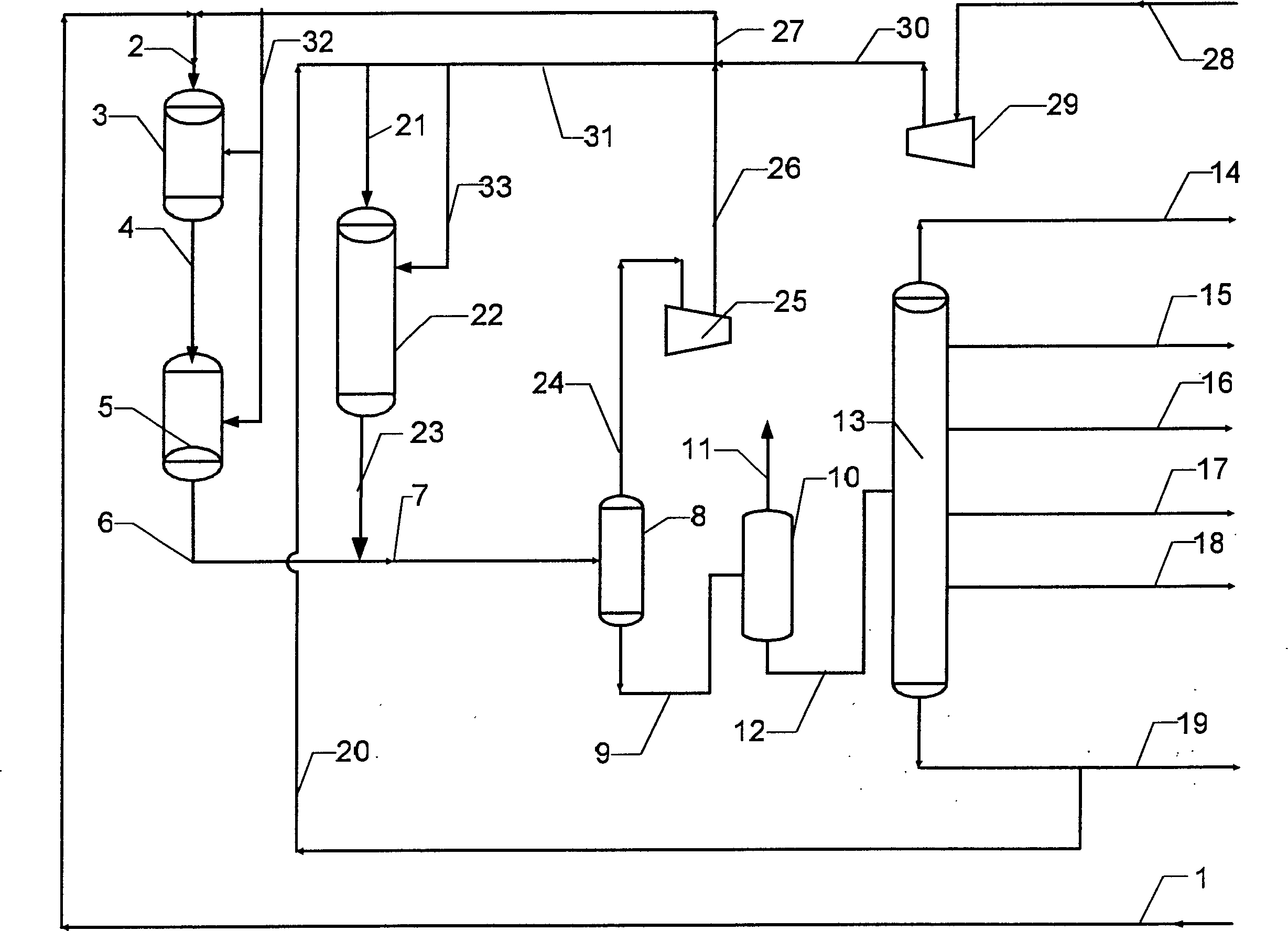Hydrogenation cracking method for maximally producing intermediate distillate
A middle distillate and hydrocracking technology, applied in the field of hydrocarbon oil cracking, can solve the problem of low catalyst activity
- Summary
- Abstract
- Description
- Claims
- Application Information
AI Technical Summary
Problems solved by technology
Method used
Image
Examples
Embodiment 1
[0029] The feedstock for the test is a common hydrocracking feedstock, namely high-sulfur and high-nitrogen VGO. According to the product plan of producing more jet fuel and diesel fractions, the fractions above 370°C are recycled to the “parallel flow” hydrocracking reactor 22. The properties of feed oil, process conditions and product distribution are listed in Table 1, Table 2 and Table 3 respectively. In Table 3, the yield of kerosene fraction (135~270°C) can be 41.0% by weight, and the yield of diesel fraction (270~370°C) It was 49.5% by weight, and the yield of middle distillate was as high as 90.5% by weight. Table 4 lists the properties of naphtha fraction (65-135°C), kerosene fraction (135-270°C), and diesel fraction (270-370°C). It can be seen that naphtha has high aromatic potential, and kerosene fraction can Meets the main specification requirements for No. 3 jet fuel, while the diesel fraction meets the World Fuel Oil Specification Class 3 low-sulfur low-aromatic ...
Embodiment 2
[0031] The raw material for the test is a common hydrocracking raw material, and the product plan is based on the production of diesel fractions, and the fractions above 370°C are recycled to the "parallel flow" hydrocracking reactor 22. The properties of raw oil, process conditions and product distribution are listed in Table 1, Table 2 and Table 3 respectively. In Table 3, the yield of diesel fraction (150-370° C.) is as high as 89.5% by weight. Table 5 lists the properties of the naphtha fraction (65-150°C) and diesel fraction (150-370°C). It can be seen that naphtha has high aromatic potential, and the diesel fraction can meet the requirements of the world's fuel oil standards for Class 3 low-sulfur and low-aromatic hydrocarbons Diesel requirements.
[0032] Example 1
[0033] Example 1
[0034] Example 1
[0035] Product distillation range, ℃
[0036] Product distillation range, ℃
PUM
 Login to View More
Login to View More Abstract
Description
Claims
Application Information
 Login to View More
Login to View More - R&D Engineer
- R&D Manager
- IP Professional
- Industry Leading Data Capabilities
- Powerful AI technology
- Patent DNA Extraction
Browse by: Latest US Patents, China's latest patents, Technical Efficacy Thesaurus, Application Domain, Technology Topic, Popular Technical Reports.
© 2024 PatSnap. All rights reserved.Legal|Privacy policy|Modern Slavery Act Transparency Statement|Sitemap|About US| Contact US: help@patsnap.com








